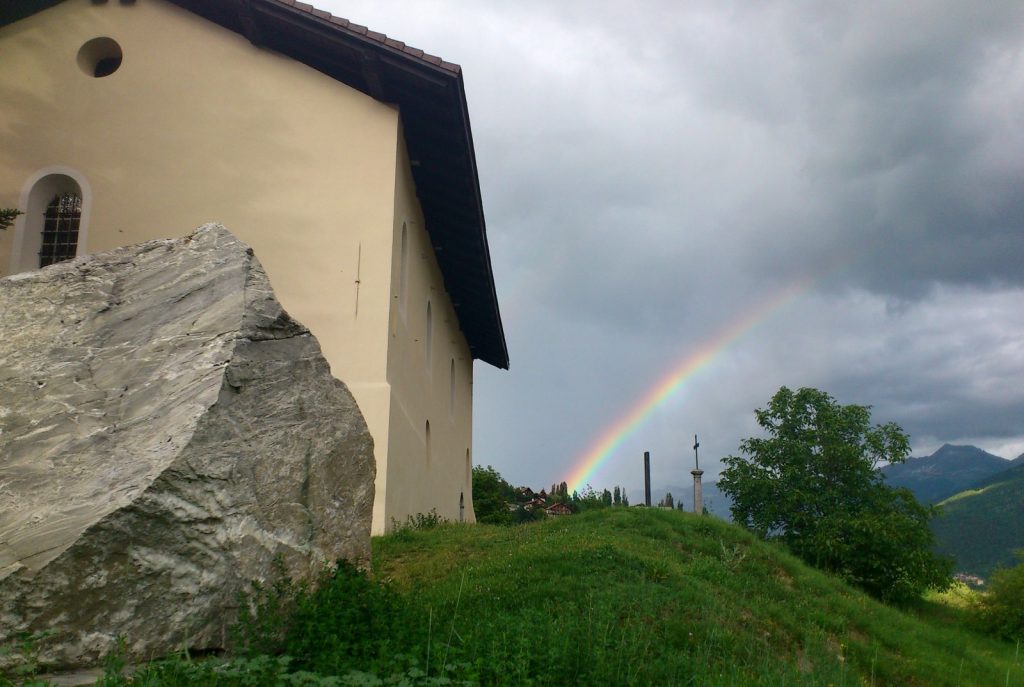Cycling was off the menu today but that didn’t rule out running. Last week I didn’t run much due to needing to spare the legs for the bike race, but today was a perfect opportunity to get out and use a different set of muscles. There were a few photographic opportunities too (with the mobile phone) – after the workout…
The main focus of today’s run was to work on the forefoot strike, particularly through relaxing the ankle. I wanted to ensure that there was a proper forefoot landing and not a vague midfoot landing. It’s become clear the the real shock absorber on landing is the calf muscle. The calf muscle lengthens as the foot first lands on the front and flattens down until the heel touches. While the calf lengthens this muscle is firing – thus putting a great load on it. In medical terms (Educated Idiot Jargon) they call it an “eccentric contraction” of the muscle. We are stuck normally with shoe design invented by Nike – with large soft heels – so we don’t develop the calf muscle to cope with acting as a shock absorber. This it makes it very hard to adapt to using the calf muscles correctly – hence all the DOMS and long recovery periods I’ve been going through. Improved technique can however help with this process of adaptation. The videos I linked to a couple of days ago show the ankle extending as the foot leaves the ground behind the runner and remaining extended and relaxed until the toes come back to the ground. The EIJ (Educated Idiot Jargon) for this is “dorsiflexion”. It appeared to me that a very loose ankle – almost flicking back as the foot leaves the ground would be easy to maintain as the foot is pulled forwards and then dropped to the ground – and it is.
One thing that really seemed to help to keep the ankle loose was placing the foot on landing closer to the centre line of the body. This allows the foot to land more on its outside edge and seems to make it easier to sense the appropriate forefoot contact. Working on this made me feel how an active use of the arm action complimented – through the twisting of the core of the body – the motion of the feet inwards slightly across the body. The next thing to strike me was that this core body action required quite a lot of internal activity and it felt incredibly similar to the action I felt on the bike yesterday when the use of core power suddenly stepped up the pace for the last 40km. Very interesting sensations. Another thing I noticed was the extended ankle action felt very similar to how the ankle has to be extended in swimming the crawl. Perhaps the classic “runner’s kick” that plagues swimmers is directly caused by heel striking and never extending the ankle naturally though it’s range when running.
It felt absolutely great running uphill. There was no feeling of tiredness regardless of yesterday’s almost 6hr race. Running downhill I was able to work on serious forefoot landing and avoiding reaching ahead too much for safety – it was a very interesting exercise and as it felt more coordinated and secure I allowed the speed to increase up to 16kph – covering the last kilometre in about 4m 30s. This is the first time I’ve allowed any speed when running “barefoot” and it felt great and effortless – even when the gradient switched back uphill. It felt at it’s very best when the cadence went over 90 (180 paces per minute) which is when it is supposed to be most efficient. I was fully aware that such a reckless increase of pace would definitely mean DOMS and three days minimum recovery from the pain – but I couldn’t resist it. The Merrell shoes were great too. They are the best shoes I’ve ever owned both barefoot or with socks if it’s cold.



